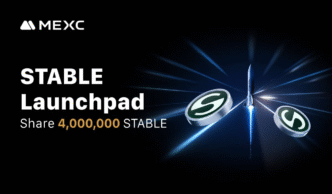Exclusive Interview with Klay Peterson, Head of Protocol & Product Strategy at FortisX
The institutional side of Proof-of-Stake has grown rapidly, but few companies have approached it with the level of engineering discipline expected in traditional enterprise infrastructure.
Since 2018, FortisX has been quietly developing systems that prioritize reliability, transparency, and predictable validator behavior — long before institutional staking became a mainstream discussion.
We spoke with Klay Peterson, Head of Protocol & Product Strategy at FortisX, to understand how the company built one of the most disciplined infrastructure stacks in the sector, what differentiates institutional operations from retail, and what he believes the next evolution of Proof-of-Stake will look like.
Interview
TechAnnouncer: Klay, let’s start with your background. How did you enter the infrastructure side of PoS?
Klay Peterson:
My background is in distributed systems and infrastructure reliability. I worked on telemetry pipelines, region-redundant environments, and automated operations.
When early Proof-of-Stake networks emerged, I immediately saw a gap: traditional reliability practices simply weren’t being applied. Validator operations lacked consistency, observability, and risk frameworks.
This intersection of distributed engineering and crypto economics is what brought me here.
TechAnnouncer: FortisX has been operating since 2018 — long before institutional staking became a buzzword. What was the initial mission?
Klay:
We wanted to make validator behavior predictable.
Back then, uptime was inconsistent, monitoring was poor, and institution-level controls didn’t exist.
If you can’t observe a system, you can’t trust it — and institutions require trust rooted in engineering, not narratives.
So we started with transparency and built from there.
TechAnnouncer: How has FortisX evolved over these years?
Klay:
We began by building internal tooling: telemetry, alerting, performance indicators.
Then we implemented automation — risk scoring, policy-driven allocation logic, and unified control layers across multiple networks.
Today, FortisX is a complete infrastructure platform:
a structured environment that allows operators to manage risk, enforce policies, and execute staking strategies with measurable precision.
TechAnnouncer: For someone familiar with infrastructure but new to staking — how would you describe FortisX?
Klay:
FortisX is an orchestration, analytics, and risk-control layer built on top of Proof-of-Stake networks.
We treat validators as high-load distributed systems and bring enterprise-grade standards to their operations:
observability, predictable behavior, automated policies, and clear operational discipline.
TechAnnouncer: What components of the platform are the most critical?
Klay:
Three pillars:
- Telemetry & Validator Analytics — you can’t control what you can’t see.
- Risk Layer — scoring models and event-driven alerts.
- Allocation Engine — capital distribution governed entirely by policy.
Everything else — orchestration, APIs, access control — supports these core layers.
TechAnnouncer: You often emphasize “predictable validator performance.” Why is that such a central concept?
Klay:
Institutions don’t want “good most of the time.”
They want deterministic behavior.
Upgrades, load spikes, latency variation — systems must remain consistent.
Predictability is the prerequisite for risk management.
TechAnnouncer: What risks do you see most underestimated in PoS operations?
Klay:
Operational risk — by far.
People worry about slashing, but most failures come from mundane things:
late updates, configuration mistakes, weak monitoring, and unstructured processes.
These issues are much more common than dramatic events.
TechAnnouncer: Can you walk us through your risk scoring system?
Klay:
Sure.
We collect real-time telemetry across validators, convert the data into actionable indicators, and feed it into our scoring models.
The output is a risk profile that our system uses to avoid unreliable operators, rebalance positions, or adjust allocation policies.
TechAnnouncer: Policy-based allocation is a term you use often. What does it mean in practice?
Klay:
It means capital moves strictly according to rules — not intuition.
Examples:
- no more than X% exposure per validator,
- avoid validators above a risk threshold,
- rebalance when performance deviates from standards.
This removes human error and ensures operational reproducibility.
TechAnnouncer: What were the most difficult technical challenges to solve at scale?
Klay:
Resilience across diverse networks.
Every chain behaves differently — different latency patterns, update cycles, event models.
We had to build unified telemetry and control frameworks that operate consistently across all of them.
Predictable multi-region behavior was another major challenge.
TechAnnouncer: What is your philosophy around observability?
Klay:
If a metric isn’t actionable, it’s noise.
We focus only on indicators that drive decisions:
alerts, scoring, thresholds, policy triggers.
Pretty charts are nice, but they don’t run operations.
Actionable data does.
TechAnnouncer: How do you achieve fault tolerance?
Klay:
Through layered redundancy:
multi-region deployment, independent monitoring paths, fallback logic for critical operations, and automated config validation.
No single failure should introduce unpredictability into the system.
TechAnnouncer: How would you describe the current state of institutional staking?
Klay:
Growing, but still fragmented.
Institutions want structure:
governance, auditability, constraints, and clear SLAs.
The shift toward mature, operationally grounded staking has already begun — and it’s accelerating.
TechAnnouncer: What changes do you expect in the next few years?
Klay:
More automation, deeper risk modeling, stronger observability.
Validator operations will resemble traditional high-load infrastructure —
with predictable SLAs, strict policies, and engineering-driven standards.
TechAnnouncer: And finally — what are FortisX’s mid-term priorities?
Klay:
Strengthening our risk layer, expanding multi-region architecture, integrating more networks, and advancing our behavioral analytics for validators.
We don’t build for hype — we build for reliability, consistency, and long-term infrastructure stability.
Closing Thoughts
FortisX represents a shift in approach to staking — away from speculation, and toward the engineering principles that define mission-critical infrastructure.
With leaders like Klay Peterson focusing on transparency, automation, and measurable reliability, it’s clear that institutional staking is entering a new phase — one that looks far more like enterprise infrastructure than like crypto.














